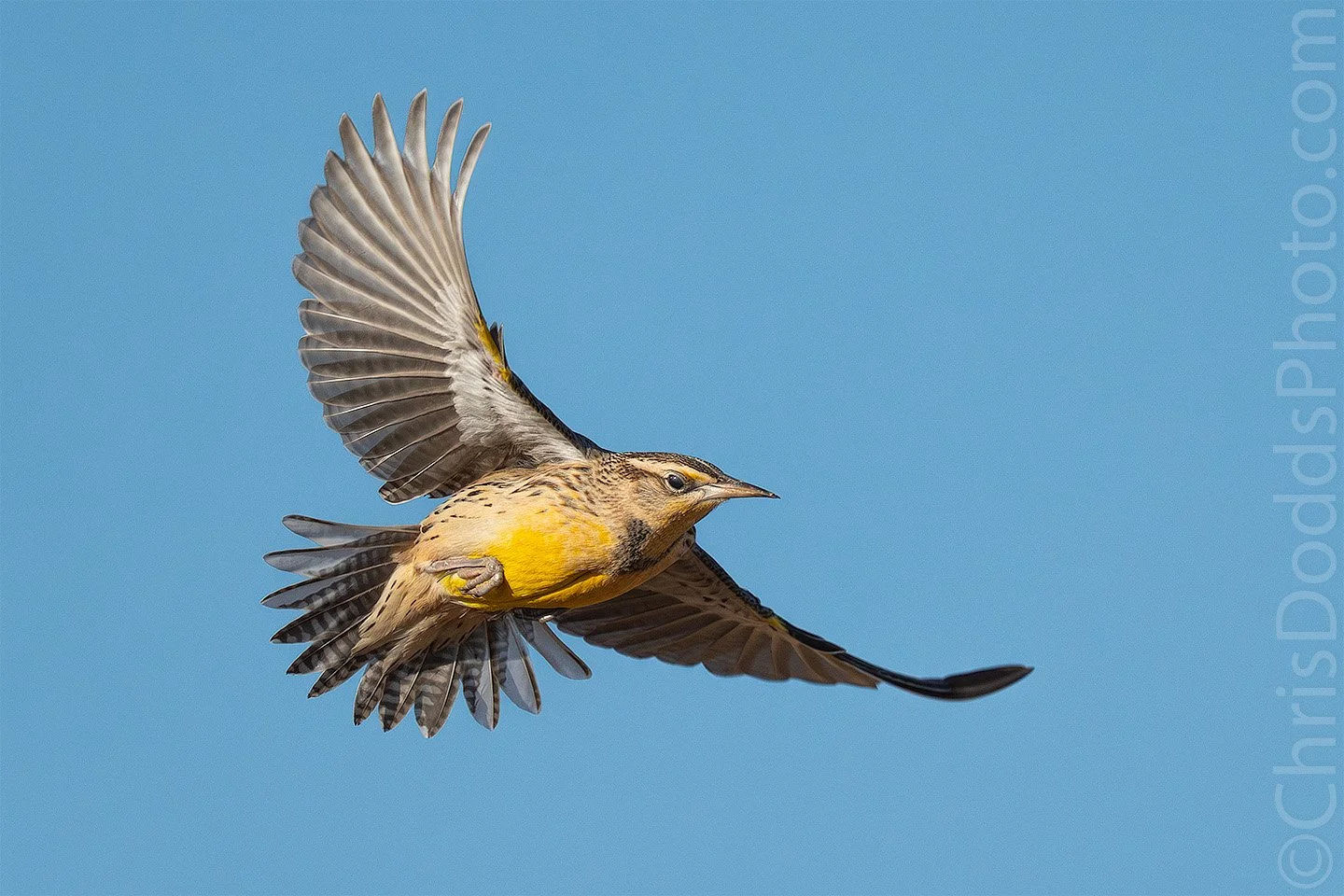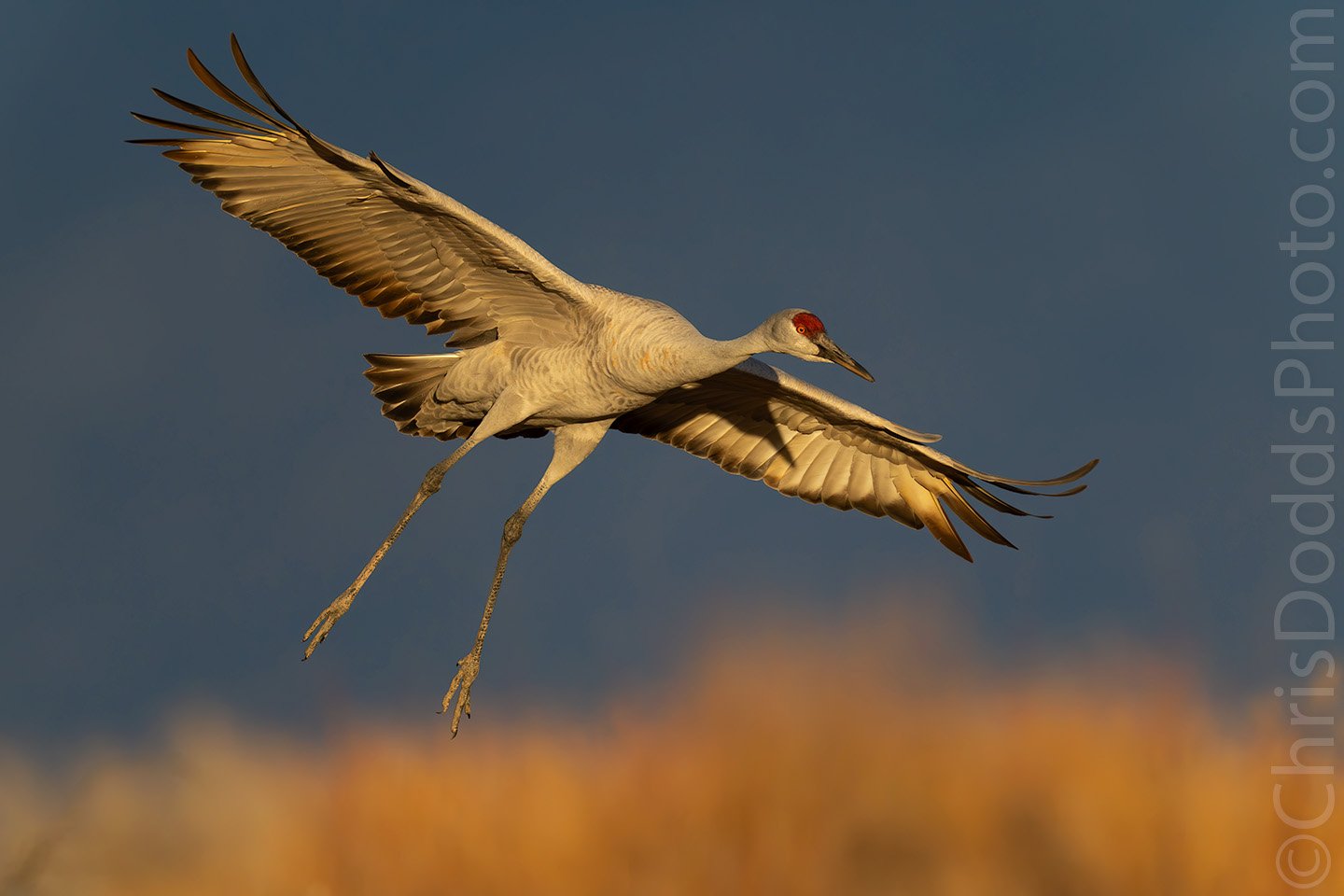Western Meadowlarks Steal the Show During Better Than Bosque Workshop
One of the unexpected highlights from last December's Better Than Bosque workshop was the surprising abundance of Western Meadowlarks. While most people come to photograph Sandhill Cranes, Snow Geese, and raptors, these brilliant little songbirds added a burst of colour—and challenge—to our mornings in the cornfields.
Western Meadowlarks are easy to hear but not always easy to capture. Their flute-like song is iconic across the American West, and their bright yellow chest with the bold black "V" makes them a favourite among bird lovers. But photographing one in flight? That's another story entirely.
This image is a full-frame capture of a Meadowlark changing direction mid-air, right as I tracked it through the lens. The 120fps burst rate of the Sony a9 III was a lifesaver—it ensured getting the wing position just right. Of course, the real trick was keeping this fast, erratic flyer in the viewfinder long enough to make it all count—no small feat, but a rewarding one.
That kind of magic—the unexpected moments, the birds that weren't even on the checklist, the laughter between shutter clicks—is precisely why I love leading this trip.
And here's the good news: we have just two spots left for this year's Better Than Bosque workshop. If you're looking for a winter bird photography experience packed with opportunities, surprises, and the chance to sharpen your skills alongside a small group of passionate photographers, this is it.
Come for the Cranes, stay for the Meadowlarks.
Western Meadowlark in flight (Sturnella neglecta, Sturnelle de l'Ouest, Pradero occidental, WEME) from my Better than Bosque workshop. Bernardo Wildlife Area, Bernardo, New Mexico, USA. Image Copyright ©Christopher Dodds. Sony a9 III Mirrorless camera & Sony FE 600mm f/4 G Master OSS Lens with Sony FE 2X Teleconverter @1,200mm ISO 1,000, f/8 @ 1/5,000s. Manual exposure. Full frame image.












